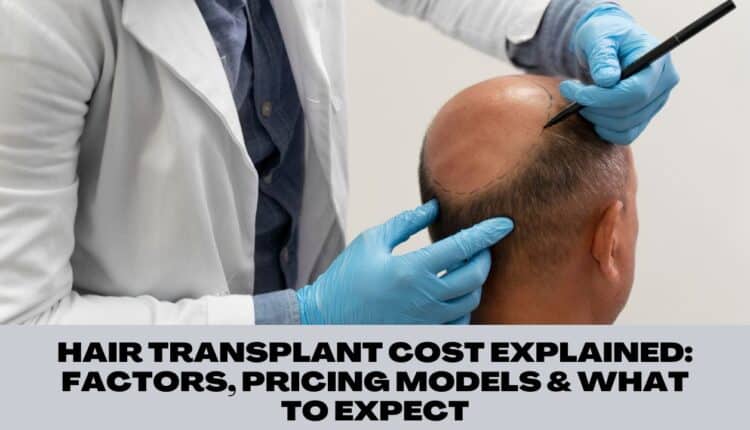Hair Transplant Cost Explained: Factors, Pricing Models & What to Expect
Let’s be real—hair transplants aren’t exactly dinner-table conversations, but if your hairline’s been ghosting you, it’s fair to wonder what it’ll cost to get it back. Hair loss is a common struggle, and the idea of restoring your hairline with modern techniques is more appealing than ever. But before diving head-first into the world of grafts and follicles, most people have one burning question: what’s the actual hair transplant cost?
Spoiler: it’s not a one-price-fits-all deal. The cost of a hair transplant depends on a bunch of variables—some obvious, some sneaky. Whether you’re considering FUT, FUE, or newer methods, understanding the pricing structure can help you avoid sticker shock and make a more informed decision.
What Is the Average Hair Transplant Cost?
There’s no flat fee for a hair transplant because, honestly, everyone’s hair loss journey is different. Some areas may require minor touch-ups, while others may need full-scale restoration. On average, the price of a hair transplant can range from $4,000 to $15,000, depending on the location and the extent of the procedure.
Big price tag? Sure. But remember, this is a one-time investment for long-term results—not a monthly payment for topical treatments that ghost your wallet and your scalp.
What Affects Hair Transplant Cost the Most?
1. Number of Grafts Needed
This one’s a no-brainer. The more hair you need moved, the more work the surgeon has to do. Whether you’re just filling in a widow’s peak or going full scalp coverage, the hair transplant cost rises with graft count. Some clinics charge per graft (typically $3–$7), while others offer a flat-rate package.
2. Type of Procedure (FUT vs. FUE)
The two most common methods—FUT (Follicular Unit Transplantation) and FUE (Follicular Unit Extraction)—come with different price tags. FUT may be slightly cheaper, but FUE is more precise, less invasive, and generally favoured for faster recovery and reduced scarring.
3. Surgeon’s Experience and Reputation
Let’s just say this: you don’t want a Groupon hair transplant. A highly skilled, board-certified surgeon with years of successful cases will charge more—but for good reason. This is your hairline, not a trial-and-error experiment. The quality of results often correlates directly with the surgeon’s experience.
4. Geographic Location
Where you live (or where you’re willing to travel) can significantly impact the cost of a hair transplant. Procedures in cities like Los Angeles or New York generally cost more than those in less urban areas. Some people even fly overseas—Turkey and India are known for offering lower prices—but that comes with other considerations, such as travel, recovery, and follow-up care.
5. Clinic Technology and Facilities
Modern tools, robotics-assisted procedures, and state-of-the-art clinics may raise the price—but they also increase the chances of a smoother experience and better outcomes. Consider the clinic’s technology stack and aftercare process when evaluating the cost.
Are There Any Hidden Fees?
Short answer: sometimes.
While many clinics offer all-inclusive packages, others may charge separately for anaesthesia, consultations, or post-procedure follow-ups. Always read the fine print. A low upfront quote might balloon later if those extras aren’t clearly stated.
Another thing—financing options. Some clinics offer payment plans to break the cost into manageable chunks. Be sure to review the interest rates and terms carefully.
How to Know If You’re Getting a Fair Price
Here’s the tea: Don’t just hunt for the cheapest quote. Look for value.
A good rule of thumb is to ask questions like:
- What’s included in the cost?
- How experienced is the surgeon?
- Can I see before/after photos?
- Is post-op support included?
Also, read reviews from real people. Clinics that offer transparent pricing and real-life testimonials are usually a safer bet. One example of a reputable clinic known for top-tier expertise and patient care is Beverly Hills Hair Restoration, a name trusted by both locals and celebrities alike. You’ll find they combine artistry with medical skill—making them a solid option for those looking to invest wisely in their hair.
Conclusion
Here’s the bottom line—hair transplant cost isn’t cheap, but neither is losing confidence every time you pass a mirror. If done right, a transplant can give you long-lasting, natural results that no over-the-counter potion can match. Understanding the pricing factors helps you avoid scams, set realistic expectations, and plan your budget effectively.
Whether you’re in the early stages of hair loss or have been contemplating it for years, taking that next step with full clarity is crucial. No, the cost isn’t pocket change—but the payoff can be life-changing. Ensure you select the right clinic, ask the right questions, and invest in a procedure tailored to your specific needs.


